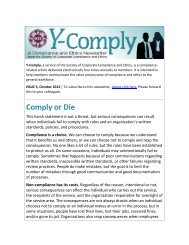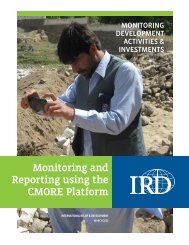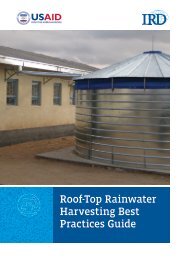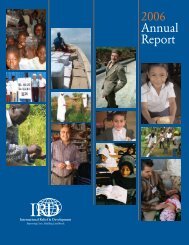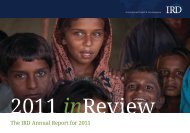Empowering citizens Engaging governments Rebuilding communities
Empowering citizens Engaging governments Rebuilding communities
Empowering citizens Engaging governments Rebuilding communities
Create successful ePaper yourself
Turn your PDF publications into a flip-book with our unique Google optimized e-Paper software.
A typical market project would begin with<br />
an intensive cleaning campaign followed<br />
by rehabilitation work to rebuild roads<br />
and infrastructure that had either been<br />
destroyed or fallen into disrepair<br />
mutually reinforcing, which enhanced the likelihood of<br />
a project’s lasting impact.<br />
Another consideration for IRD was the need to capture<br />
the progression and links between the various shortand<br />
long-term initiatives, so that the shift from service<br />
provision (such as debris removal) to economic<br />
development would not be abrupt and, ideally, would<br />
play out in a linear fashion, a chain of events that<br />
would reflect increasing stabilization. Another way to<br />
describe the complete package would be as a selfsustaining<br />
cycle (figure 1).<br />
CSP in full: Ramadi and the 17th Street market<br />
A typical market project would begin with an intensive<br />
cleaning campaign followed by rehabilitation work to<br />
rebuild roads and infrastructure that had either been<br />
destroyed or fallen into disrepair. Grants would then be<br />
awarded to help businesses in the revitalized market<br />
increase their stock and services to boost sales and<br />
generate new jobs. Such rehabilitations were not possible<br />
without secure neighborhoods, and perhaps no city<br />
in Iraq embodied the need for a joint civ-mil partnership<br />
more than Ramadi. The dramatic turnaround began in<br />
mid-2006, during the Sunni Awakening and the military’s<br />
subsequent push to win the city back from insurgents.<br />
“In 2006, Ramadi had been written off by the military,”<br />
said Gartner, the CSP deputy chief of party. “The<br />
level of destruction was huge. By that time, insurgents<br />
were parading openly up and down 17th Street, the<br />
main street though the city. They were on TV with their<br />
weapons announcing, ‘We own the city.’ So when the<br />
Marines cleared that, the insurgents just destroyed<br />
everything in their way. It was a hardcore battle.” Prior<br />
to 2003, 17th Street had been one of the city’s main<br />
commercial arteries. But the urban warfare, which<br />
had damaged shops and caused shop owners and<br />
residents alike to flee, transformed the corridor from<br />
a lively district into a wasteland. Before the military<br />
campaign to win back the area began, terrorists put up<br />
roadblocks and lined vacant buildings with explosives.<br />
After the military had regained control, there was not<br />
much to control other than the land.<br />
The military split the city into different zones, and<br />
within each zone a company or platoon of Marines<br />
2<br />
A complete stabilization package<br />
Figure 1<br />
Self-sustaining project work cycle<br />
CIES-funded public works<br />
projects boosted short-term<br />
employment and rehabilitated basic<br />
infrastructure (such as streets and<br />
markets), which allowed for . . .<br />
Development grants to help<br />
businesses in the revitalized<br />
areas rebuild economically,<br />
which boosted the need for . . .<br />
Apprenticeship and job placement<br />
services that linked reemerging<br />
businesses and contractors to newly<br />
skilled labor hires, many of whom started<br />
out on CIES-funded works projects.<br />
Vocational training to help young people<br />
acquire the technical and business<br />
skills to find permanent or long-term<br />
employment, which could be secured<br />
through . . .<br />
31



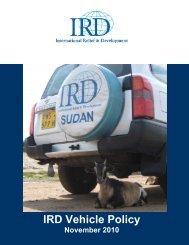
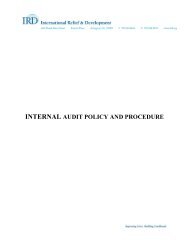
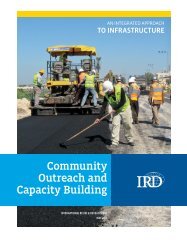
![Guide bonne pratique production d'oignon qualité_VF_4_2411012[1]](https://img.yumpu.com/23506639/1/184x260/guide-bonne-pratique-production-doignon-qualitac-vf-4-24110121.jpg?quality=85)

